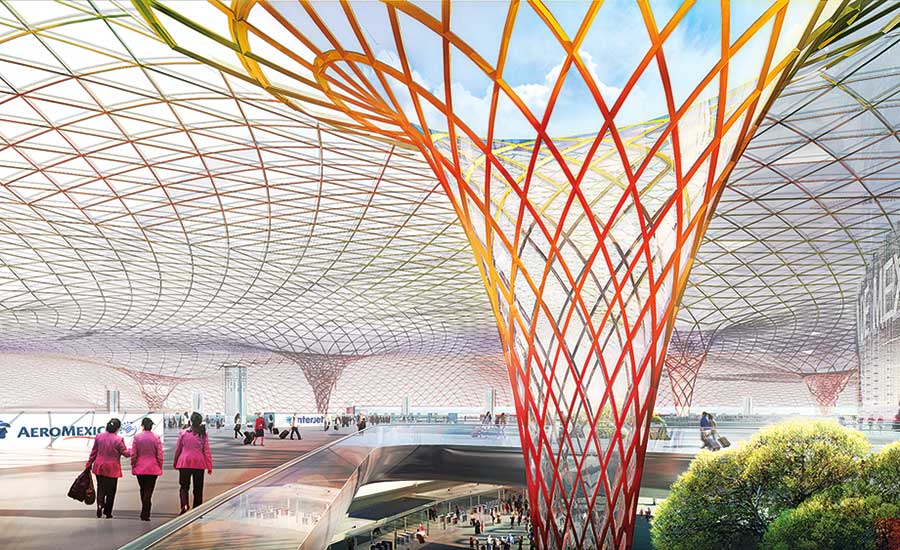Top 500 Design Firms Sourcebook
The Market Is Near its Peak, But How Long Will It Last?

Viva Mexico City Parsons was selected in 2015 as the prime program and design manager for the New International Airport of Mexico City, which is anticipated to be the largest airport in Latin America. Photo courtesy of Parsons
The market for construction design services is healthy, with a few exceptions. The buildings market continues to grow at a measured pace, and the passage of the federal Fixing America’s Surface Transportation (FAST) Act, as well as progress in Congress on other federal infrastructure funding initiatives, have many designers in the infrastructure markets optimistic. While low oil prices have depressed the markets for big-ticket oil and gas work and the power market seems sluggish, most U.S. design firms are in a good frame of mind.
However, there is concern about the future. The U.S. economy is not robust, and there are concerns about what impact the outcome of the presidential election will have on regulations and the market. Also, economic and political turmoil abroad could have a significant impact on the domestic market.
Some design firms are beginning to see signs of a pending slowdown. “There seems to be more uncertainty in the market as the volatility of the stock market, apparently, has had a negative psychological impact on the ability to obtain finance,” says Henry L. Lucas, CEO of ECS Corporate Services.
“Clients in the private sector are concerned about the economy [and] job and population growth impacting their projects. Contractors in most areas are hungrier for projects than they have been in 2014 and 2015,” adds Calvin T. Ladner, president of LJA Engineering.
The evidence of the market trends can be seen in the data from ENR’s Top 500 Design Firms list. Taken as a group, the Top 500 firms had design revenue of $91.81 billion in 2015, down 0.5% from $92.30 billion in 2014. Market growth was up on the domestic side, rising 4.4%, to $69.07 billion, in 2015, from $66.16 billion in 2014. However, revenue from projects outside the U.S. fell 13.0%, to $22.74 billion, in 2015, down from $26.14 billion in 2014.
The overall downturn in revenue is largely a result of a drop in design work in the oil-and-gas sector, which fell 8.1%, from $18.1 billion, in 2014, to $16.7 billion. This drop-off can be attributed to a sagging international market as, surprisingly, revenue from the domestic oil-and-gas market actually grew by 12.6%.
Mergers and acquisitions continued apace in 2015 and the beginning of 2016. However, the growth of megafirms is having an impact on midsize designers, which worry about their ability to compete.
“On large-scale or specialized work, these firms dominate the market for their perceived experience and potential for added value, especially to equally large international clients,” says Philip M. Davis, senior vice president at Fishbeck, Thompson, Carr & Huber Inc. He says local firms can leverage their position with existing clients as trusted advisers or they can specialize in order to compete for value-priced services. But “this makes them targets for acquisition,” he says.


